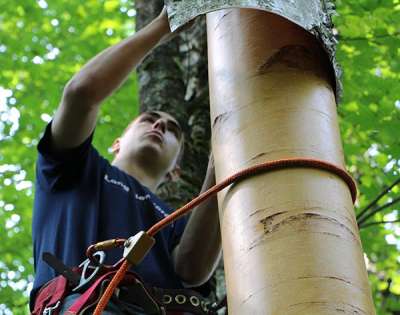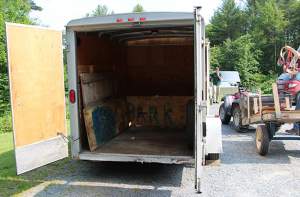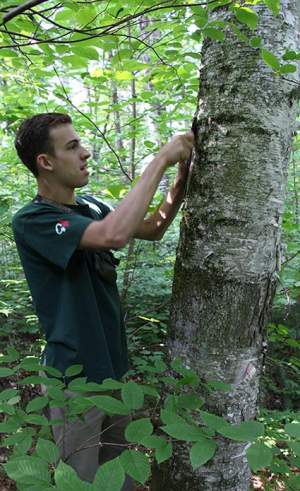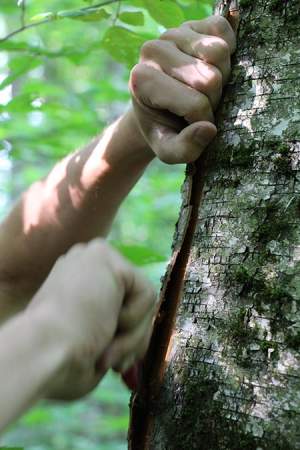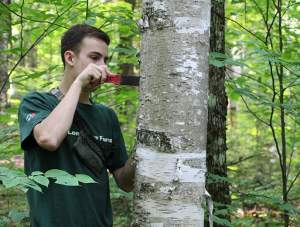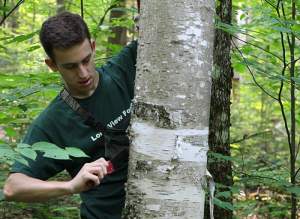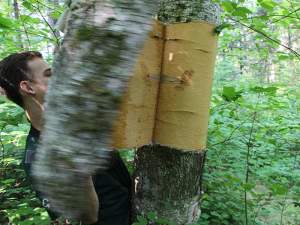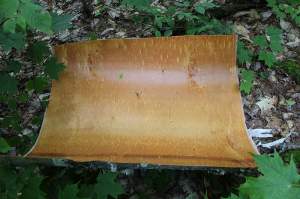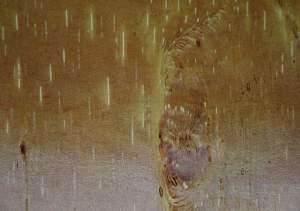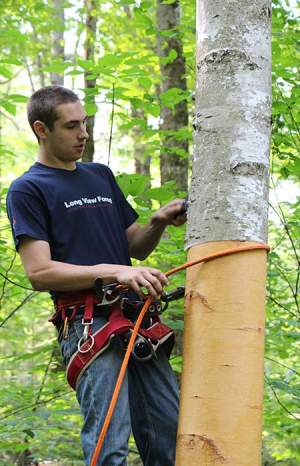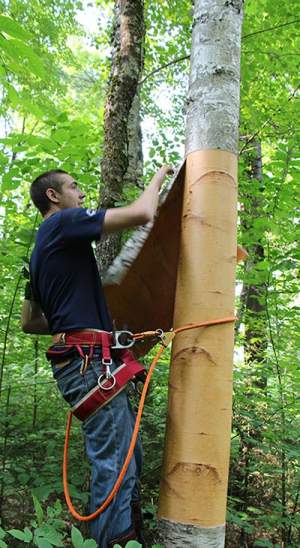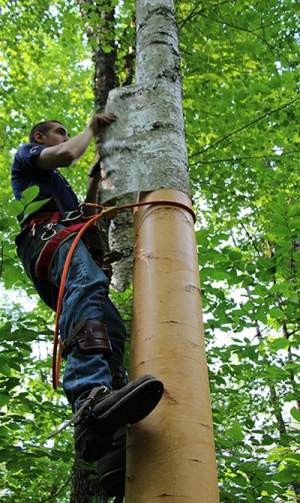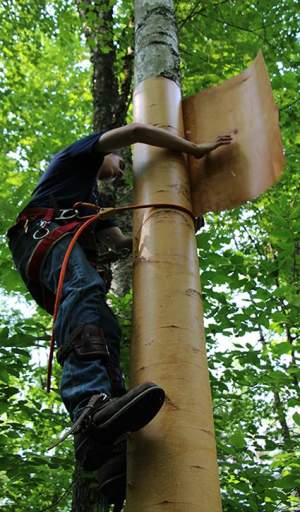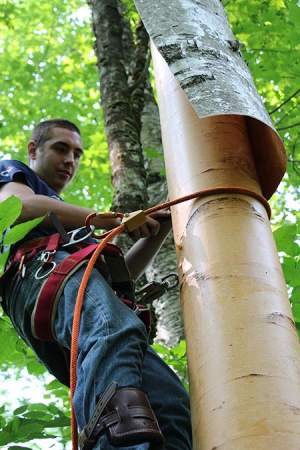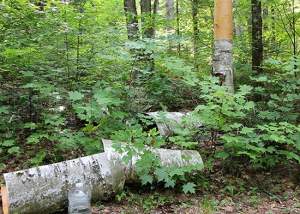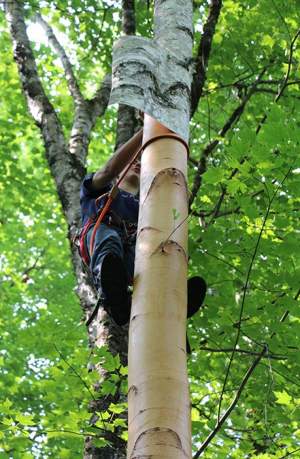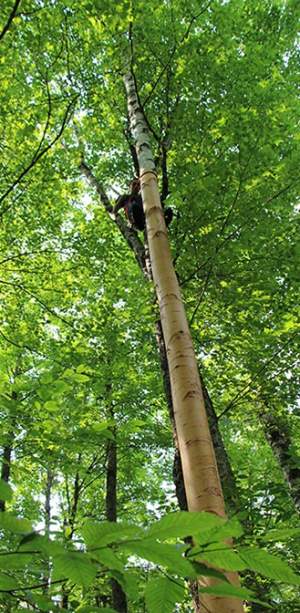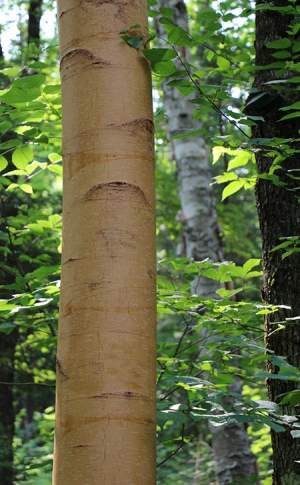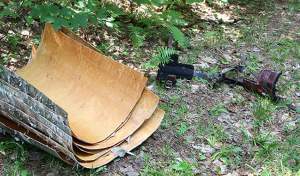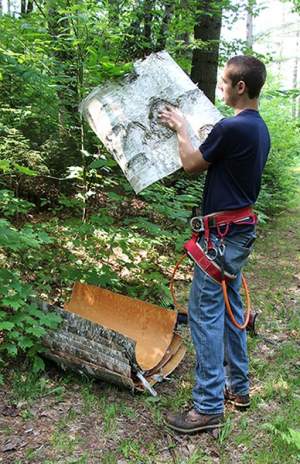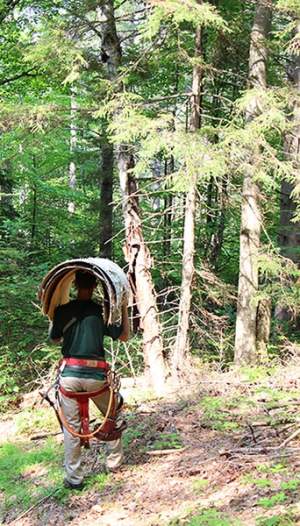The birch bark peelers arrived in a pickup pulling a covered trailer. There was a 4-wheeler in it, a smaller trailer, and sheets of cardboard and stickers for the bark. They unloaded the 4-wheeler and secured a chainsaw to the front rack, some climbing gear to the back rack. They rode out a logging road and stopped to cut a red spruce that had fallen across, then drove up a hill to where the spruce and white pine were joined by hard maple and paper birch.
It was a two-man crew; Will Lehning and Tim Putnam. Will is a couple years out of Paul Smiths’ forestry school and working full time for Long View Forest Management, the outfit in charge of the job. Tim’s employed for the summer, making money before he heads off to college in the fall.
Both men donned their climbing gear – the only tools they carried were a utility knife and a putty knife. “It’s a perfect day for this,” said Tim as he scored the bark of the first birch with his knife, cutting a line about three feet long into the trunk. “Sunny, warm, right after a good rain is ideal.” He used the putty knife to get the bark started on the left edge of the score mark, then worked his fingers in between the outer and inner bark. With moderate effort, he peeled the sheet of bark a quarter of the way around the tree. Then again. Then the last pull made a half rotation and the bark fell free. “You’ve got a dry side and a wet side here,” he said. “It should get better as I go up.”
They paid the landowner $3.50 for that sheet of bark. Tim climbed the tree, reaching up as far as he could for each vertical cut, and was able to get five more sheets before he got into branches.
Mid-June to late-July is the prime peeling window – it’s when the bark’s loosest. But even then every tree peels differently. “I keep trying to nail down why, exactly, a tree is hard or easy to peel,” Will said, “but can’t. But I’ve developed bark intuition; I just get a feeling as I look at a tree and can usually tell how it’s going to go.”
The crews expect to peel about 20 percent of the trees in a stand, but on good sites the bark comes easy and they peel more. Payouts to landowners this year have been between $200 and $2,000 – that big number coming on a smashing 2- to 3-acre site where they peeled around 600 sheets. Stripping the bark kills the tree, so the work is done in conjunction with a timber harvest on trees that were going to be cut within a year.
When the sheets of bark are collected they’re stacked and stickered, just like lumber. Weight is added back at the yard so they dry flat. In a few months they’re ready to sell – buyers come to the yard and rifle through stacks of bark; they buy by the square foot. Long View sells to interior decorators, furniture makers, wedding planners, craftspeople. One guy recently bought a custom-peeled 14-foot sheet for a canoe.
If you’d watched these men work you would have probably been surprised at how fast everything went. How easily the bark peeled. How quickly they climbed the trees. It seemed like it took only minutes to completely strip a trunk. Afterwards the trees looked golden and glowed amidst the dark maple boles that surrounded them. In a few days they were maroon-colored. A few weeks from now they’ll be headed for a sawmill.


